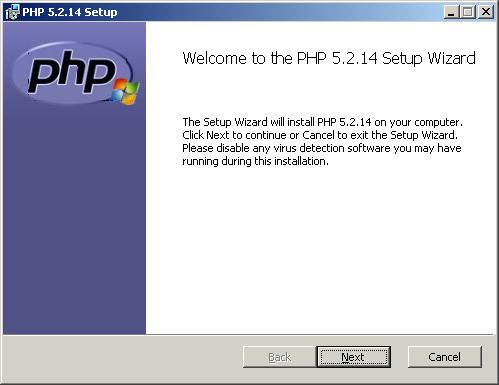Installing Php5 On Apache 2.2
Installing Apache 2.4.25. 19 comments on “ Installing Apache 2.4 and PHP 7 for Development on Windows ”. The path to my old php5 directory was the very.
In this post I’m going to explain how to install Apache and PHP without using the WAMP or XAMPP distributions, I’m using this approach because I think you can have more control over configurations, modules and services installed. Installing Apache 2.4.25 • To download Apache you have two popular options: Apache Lounge or Apache Haus. Go to the download section of any of this projects located on or, just make sure: • To choose the binary distribution. • Download the binaries that matches your operative system bitness (32 or 64 bit). Apache x86/x64 Download (Apache Lounge Screenshot) At the moment of writing this post I’ve used Apache Lounge binaries because they are compiled with the latest Windows Visual Studio C++ 2015 (VC14). • Then download and install the (VC14) version 14.0.24215. • Unzip Apache binaries to the C: Apache24 folder.

• To install Apache as a Windows service you have to open the command prompt window (cmd.exe) as administrator and execute: rem # Or whatever path you unzipped the Apache files cd 'C: Apache24 bin' rem #Command to install Apache 2.4 as a Windows Service httpd.exe -k install -n 'Apache 2.4' If you do this you can use the Apache Monitor (located at C: Apache24 bin ApacheMonitor.exe) to start and stop Apache. Installing PHP 7 • To get the latest stable version. You can always download a release candidate at the (if you downloaded the 32 bit version of Apache then download PHP x86, don’t mix versions).
Other common question is whether you should download the thread safe or non-thread safe PHP version, I’m using the thread safe version, because on the says: If you are using PHP as FastCGI with IIS you should use the Non-Thread Safe (NTS) versions of PHP. • Then unzip the PHP binaries to the C: php7 folder. Configure Apache • Open the Apache Configuration file C: Apache24 conf httpd.conf • Locate the ServerRoot to configure the server root to c:/Apache24, the following should be used. AddHandler application/x-httpd-php.php AddType application/x-httpd-php.php.html LoadModule php7_module 'c:/php7/php7apache2_4.dll' PHPIniDir 'c:/php7' Configure PHP • The only thing you have to do is to rename the file C: php7 php. Canon Pixma Mp500 Mp Navigator Driver more. ini-development to C: php7 php. Epson Lq 2500 Windows 7 Driver on this page. ini.
It’s a good idea to make a backup of this file as well. Testing the Apache and PHP Installation • You have to start Apache Windows service, to do this, use Apache monitor C: Apache24 bin ApacheMonitor.exe. The other alternative is to open the command prompt window (cmd.exe) as administrator and execute: rem #Command to start the Apache Windows service net start 'Apache 2.4' And the last alternative is to use the services console (services.msc). I use the first option. • Create the following text file C: Apache24 htdocs phpinfo.php: Then go to your browser and write, this page should show the details of your PHP installation. Troubleshooting Apache Configuration Problems If you have any problem when starting Apache because of its configuration, you can see the detailed error by executing: rem # Or whatever path you unzipped the Apache files cd 'C: Apache24 bin' rem #Command to install Apache 2. Canon Mg4250 User Manual. 4 as a Windows Service httpd.exe -t The -t parameter test the syntax of the configuration files, and then exits.
You can find the specification of the others parameteres. Thanks Daniel – I needed to update my testing server, which has been running on 15-year old versions of Apache/php that were available as.msi files, so I needed some guidance. There does seem to be one more step that should probably be added.
Hp Proliant Ml150 G6 Drivers Linux Hplip. I’m mostly running WordPress sites on my testing server, which requires the curl extension to be enabled in order to update plugins and itself. Apparently, on windows systems, the curl extension (and possibly others) won’t work properly unless the c: php7 directory is added to the windows system environment PATH variable.
Here is a thread that talks about getting the curl extension to work: One of the suggestions was to copy a couple dll files to /windows/system32, which sort of worked to enable curl – wordpress updates worked, but the curl block still wouldn’t show up in phpinfo() until after I added c: php7 to the PATH (and restarted windows), which was suggested later in the thread. Of course, if the php directory is added to the PATH it’s not necessary to copy any dll files to /windows/system32.